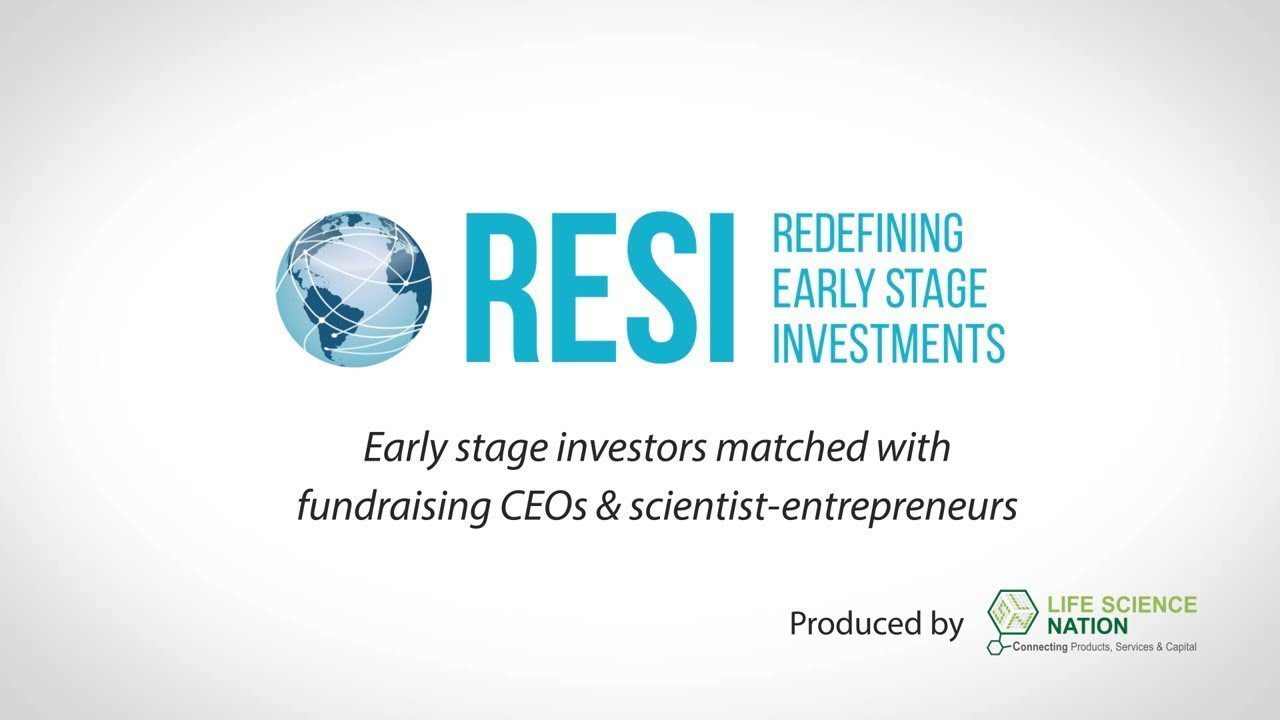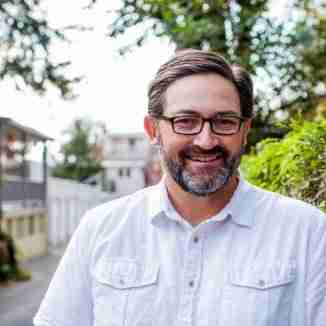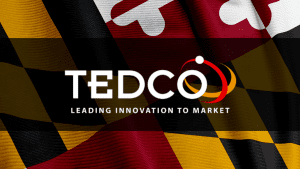
Key Takeaways from Redefining Early Stage Investments (RESI) Virtual Conference
On June 8-9, 2020, Redefining Early Stage Investments held a virtual conference focused on connecting early-stage products with capital and channel partners. The digital RESI conference included a wide array of panel events, entrepreneur workshop seminars, pitch sessions, and an innovation challenge.
Several of the RESI panels featured key opinion leaders and innovative thought leaders from around the BioHealth Capital Region (BHCR), including:
- Rich Bendis, President and CEO of BioHealth Innovation (BHI)
- Andrea Alms, Fund Manager, BHI
- Judy Costello, Managing Director Economic Development, BHI
- Crystal Icenhour, CEO and Co-Founder, Aperiomics
- Anthony Saleh, CEO, miRecule
- Arti Santhanam, Executive Director, Maryland Innovation Initiative, TEDCO
- Jarrod Borkat, Vice President, Corporate Development, Emergent BioSolutions, Inc.
- Kolaleh Eskandanian, Vice President and Chief Innovation Officer, Children’s National Hospital
- Bill Hearl, Chief Executive Officer, Immunomic Therapeutics
BHCR Panelist Highlights: Raising Early Stage Capital in Difficult Times
Rich Bendis, President, and CEO, BHI moderated this panel, which was focused on the venture capital challenges faced by early-stage companies seeking funding during the COVID-19 pandemic. The discussion centered on how young companies can navigate this environment and still attract investors to their companies.
Andrea Alms, Co-Fund Manager, BioHealth Capital Fund, BHI agreed with the panel’s view that capital is still available: “I was watching Bloomberg and I saw in 2020 there have been 18 IPOs in healthcare. That’s just amazing. Wilson-Soncini’s Entrepreneur Report showed that the valuations from seed are the same as Q4 2019. Series A stayed the same. Series B went down and Series C went up a bit…Funds haven’t shriveled up…”
She added, “I was at another panel and the question was asked would you ever put in money to someone you never ever met in person? That’s the trick, right? How do the young guys and gals do this without the Rolodex? You have to recruit an advisor that knows us. And then you at least have a shot on goal to get money even if you’ve never, ever met us in person. How do you do it? LinkedIn, family, friends, and professors.”
“The other thing is clinical trials. How can you do patient recruitment? If you’re going to have clinical trials during COVID-19 there is a path and a playbook to do it. Please learn what it is and be prepared to answer it, and not just say you know someone at the trial,” Alms added.
BHCR Panelist Highlights: Advancing Your Biohealth Technology Through Non-Dilutive Funding
The panel, hosted by Judy Costello, Managing Director, Economic Development, BHI, featured several BHCR companies that have advanced their technologies via non-dilutive funding resources. Non-dilutive funding means a company is not giving up equity and ownership of the company to obtain funding to operate their business. Non-dilutive funding comes in a variety of forms, including family loans, crowdfunding, and tax credits, among other methods.
For most emerging life science companies, grants like the National Institute of Health’s (NIH) Small Business Innovation Research (SBIR) and Small Business Technology Transfer (STTR) grants are a primary source of non-dilutive funding. Grant Funding programs like TEDCOs Maryland Innovation Initiative (MII) and others also play a key role in supporting young companies attempting to commercialize technologies licensed out of BHRC academic institutions.
Anthony Saleh, CEO of miRecule, which is an early-stage biotechnology company developing microRNA-based therapeutics located in Gaithersburg, Maryland, commented on his experiences with non-dilutive funding: “I have been successful in getting non-dilutive funding for two companies. At MIMETAS we…received mostly SBIR money and we also won a local Maryland grant from a university through the MIPS (Maryland Industrial Partnerships) program…When we founded miRecule…we applied for a phase I SBIR, in which we optimized the therapeutic RNA…and generated more proof-of-concept data in animals. We used that data to win a phase II SBIR grant that we are using to initiate our IND enabling studies so we can apply to the FDA…”
“We were lucky enough to win two Maryland state funding matches for our SBIRs. We matched a phase II for $75K and a phase I for $25K. We also won two grants from nonprofits, which gave us great publicity. There are benefits from getting nonprofit grants beyond the money,” Saleh added.
Arti Santhanam, Executive Director, MII TEDCO, added: “TEDCO itself has multiple funds that are state-funded, and two of the bigger funds are non-dilutive, including the Maryland Stem Cell Research Fund for regenerative medicine as well as the MII fund, part of which is non-dilutive…The idea is that we have a pipeline of technologies that start out at the university and federal labs and we have different funds that can add capital as the company grows in Maryland.”
“MII itself is a partnership with five regional universities and it is annually appropriated. We invest in companies in two ways. First we do grants that de-risk a technology with commercial potential…and then we help them spin them out into products. So once we have the startup we invest in those startups. Oftentimes we are the very first investment in a company. In the seven years we have run the program we’ve invested $38M and created 100 companies, 76 of which we have invested in. Our mission is economic development and ROI. We want to create jobs and grow the ecosystem in Maryland,” she added.
Crystal Icenhour, CEO, and Co-Founder, Aperiomics, which is a biohealth data science company located in Sterling, Virginia, stated, “There are layers to this. We have really strong academic founders that carried the heavy lifting for the initial grant applications. I did attend the Center for Innovative Technology’s SBIR workshops, which were really helpful to understand not just how to write a good proposal, but also to learn how to manage the grant and be a good steward of federal dollars.”
“Being in close proximity to the alphabet soup here is key. We’ve done a lot of collaborative work with NIST (National Institute of Standards and Technology) and we have a lot of support from our local county that provided some non-diluted funding to build out our own space in Loudoun County. There are a lot of opportunities out there that are not widely advertised, but having really strong connections with the continuum of economic development is always a good thing,” she added.
BHCR Panelist Highlights: Collaborating for Growth in the BioHealth Capital Region
This RESI panel brought together industry and academic thought leaders from across the BioHealth Capital Region (BHCR) to discuss the importance of strong collaborative partnerships among universities, healthcare systems, industry, government research agencies and support organizations in creating a strong and thriving biocluster.
Jarrod Borkat, Vice President, Corporate Development, Emergent BioSolutions, moderated the panel.
“The BioHealth Capital Region is one of the hottest areas in the country…Our goal today is to have everyone that is listening to this to walk away…with a nugget of information, a new idea, a fresh perspective that you can apply to your role,” Borkat said to kick off the panel.
“The region is ranked #4 by GEN as a biohealth cluster, up from #6 just a few years ago. A lot of this has to do with collaboration…and how folks from outside the region are investing in the region. When you look at VC funding we rank #3 in the country…in NIH funding we rank #3, patents #3, lab space #4, and in employment we rank #9. We have some of the brightest scientific talent in the entire country right here in our own backyard. In addition to that, we have the federal institutions. Being able to collaborate with federal institutions right in the region is one of the great advantages we have here,” he added.
“I can give you two examples of collaboration, one commercial and one academic for the way we approach things. Maxcyte is one of our key partners for our lead program in glioblastoma…I’ve known Doug Doerfler for a long time and it was very nice to able to draw on their expertise and integrate their platform into our manufacturing process,” stated Bill Hearl, Founder, and CEO of Immunomic Therapeutics.
“And then at Johns Hopkins we’ve been working with Drew Pardoll on our next antibody candidate. It’s nice to go back to our founding organization and to interact with somebody as prestigious as Drew to have an additional pipeline product. It is a great region and you can get anywhere down the East Coast very easily and I think that plays a big part in making this region a biohub,” he added.
Kolaleh Eskandanian, Vice President and Chief Innovation Officer, Children’s National Hospital, added, ”I am the principal investigator of the National Capital Consortium for Pediatric Device Innovation that is funded by the FDA. We are one of five centers of excellence in pediatric device innovation in the country. This consortium includes a good example of regional collaboration. The consortium includes the University of Maryland’s A. James Clark School of Engineering, and BioHealth Innovation provides business reimbursement and expertise to us.”
“It was very important for us to put together members that complement each other’s experience and create a very rich environment for device innovators and sponsors to bring more pediatric products to market and meet the unmet need we currently have, which is the lack of devices that are specifically tested for children. This is a great example of when we all came together to establish this consortium,” she added.
Hearl added, “I think that access to the FDA is really important for our industry. In casual conversations, you often learn a lot more than you do in the formal settings of pre-IND or IND meetings. Having that little extra personal touch and having access to the scientists and regulatory officials and program managers for grants is hugely beneficial to get some insight. I’ve always been a big advocate of the personal touch. This access is a tremendous advantage for us.”
The digital RESI conference brought together some of the top minds across academia, industry, and BHCR ecosystem support organizations for a lively, engaging, and thoughtful conversation about why the region is a top biocluster and what it will take for it to continue to thrive and grow.
- About the Author
- Latest Posts
Steve brings nearly twenty years of experience in marketing and content creation to the WorkForce Genetics team. He loves writing engaging content and working with partners, companies, and individuals to share their unique stories and showcase their work. Steve holds a BA in English from Providence College and an MA in American Literature from Montclair State University. He lives in Frederick, Maryland with his wife, two sons, and the family dog.





